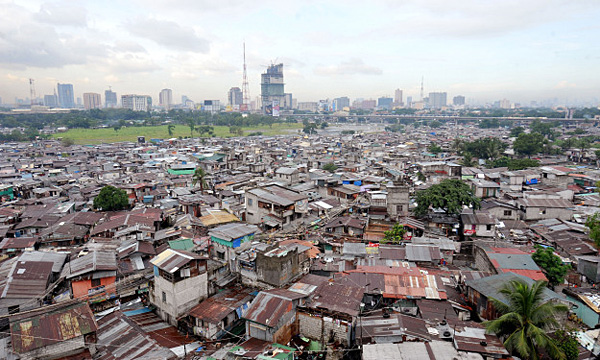
|  |  |  Editorials | Issues Editorials | Issues  
The Save-the-World Clock - Part 2
 Elizabeth Dickinson - Foreign Policy Elizabeth Dickinson - Foreign Policy
go to original
September 23, 2010


| | (Jay Directo/AFP/Getty Images) |  |
GOAL: ERADICATE EXTREME POVERTY AND HUNGER

Targets: The first goal aims to improve the lot of humanity's bottom line - halving the proportion of people whose income is less than $1 per day, reaching full employment for all people regardless of their age and gender, and halving the proportion of people who go to bed hungry.

Reality: Global poverty rates have dropped almost enough to meet the goal, and the numbers would look even better if the Great Recession hadn't struck, an International Monetary Fund study to be released at the summit will note. If not for the economic downturn, 71 million more people would have escaped poverty today.

Back in 1990, the base year of comparison for all the MDGs targets, 46 percent of the world lived on less than $1.25 a day. In 2005, it was just 27 percent - an incredible drop. But that's mainly because China alone lifted half a billion people out of poverty during the last 30 years; the rest of the world isn't doing as well. In sub-Saharan Africa, poverty rates fell by 10 percent, but because of population growth, the absolute numbers of the destitute actually rose. And even within China, some 254 million remain in extreme poverty, working on about 52 cents a day. Unemployment rates skyrocketed with the global recession; simply returning to pre-crisis levels will require 300 million new jobs, according to the U.N.'s pre-summit report.

Meanwhile, the ranks of the hungry have grown along with food prices, hitting an all-time high of more than 1 billion people in 2009. A recent report from the U.N. Food and Agriculture Organization finds that this number has fallen slightly, but warns, "The recent increase in food prices, if it persists, will create additional obstacles in the fight to further reduce hunger." G-20 countries have responded, for example by creating a global agriculture fund in 2009. But today, just 6 percent of the promised contributions have arrived.

|

 |
|  |



